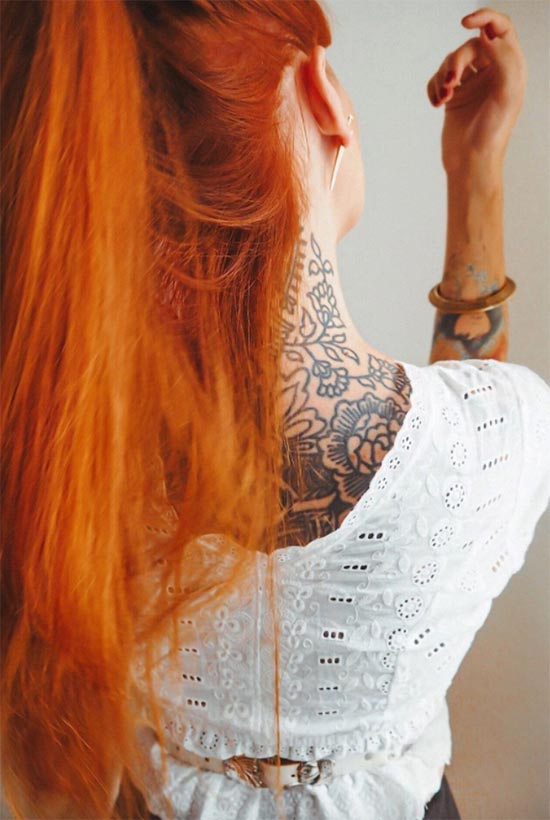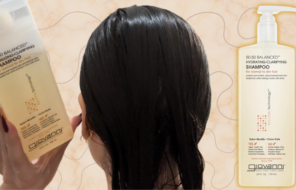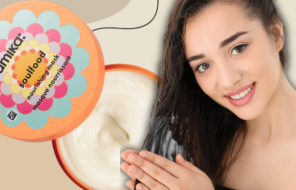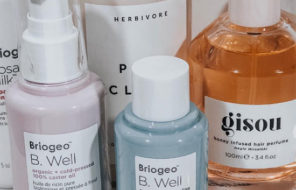- Henna is a permanent, natural hair dye perfect for achieving shades of red, brown, or black hair, depending on how you mix it with other ingredients like indigo.
- You can choose from powder, cream, and indigo henna dyes.
- Henna hair color is pretty persistent, but you’ll need root touch-ups every 6-8 weeks.
Henna hair dye is an interesting alternative to traditional hair dyes. If you’re nervous about playing with hair bleach or you don’t want to damage your hair when dyeing it, a henna hair color might be for you! Henna is famous for giving the hair a vibrant red shade, but henna hair dyes can also deposit glossy brunette tones.
Below, we explain what henna hair color is and how it works. We also cover its pros and cons, and explain who it is best for. Finally, we give a thorough guide on how you can color your own hair with henna and how you should care for it once it’s been dyed. If you’ve already attempted to color your hair with henna and regretted the results, we do discuss a few options that can help fade henna from the hair.
In this article:
- What Is Henna for Hair?
- Henna Hair Dye Pros & Cons
- Who Is Henna Hair Dye Best for?
- How Long Does Henna Hair Color Last?
- How to Apply Henna for Hair
- Henna Hair Dye Aftercare & Maintenance
- How to Remove Henna from Hair?
What Is Henna for Hair and How Does It Work?
Henna, also referred to as mehndi, is a type of dye prepared from the Lawsonia inermis plant. Lawsonia inermis is a flowering shrub that is native to northern Africa, Asia, and northern Australia. When grown in hotter temperatures, its leaves produce a lot of pigment, so they can be crushed up into a powder and used as a dye. The henna dye has many traditional uses as a hair dye or as water-resistant nail and body paint.
Henna has a bright orange-red color that, when applied to the skin, turns into a darker reddish-brown after a few days. When applied to the hair, it usually colors it a vibrant red that becomes a little deeper and more muted after a few days, although this also heavily depends on the starting hair color.
When applied to the hair, henna works differently from other hair dye formulas. Instead of lifting the cuticles to sink in, henna coats the hair shaft and slowly sinks in. It’s considered a “deposit only” hair color, which means that it can’t lighten the hair. However, unlike store-bought deposit-only dyes, which are usually semi-permanent, henna is very permanent.
Henna Hair Dye Pros & Cons
Henna for hair has a ton of pros, but there are also some serious cons to consider before deciding if it’s the right option for you and your hair.
Pros
- Conditions the hair while coloring it
- Reduces frizz and adds shine
- Adds a really vibrant color to the hair
- Very affordable
Cons
- Hair cannot be lightened or changed after the fact
- If you do try to bleach your hair after dyeing it with henna, you can end up with disastrous results
- Limited color options
- Some formulas can be messy, smelly and difficult to use
- The process takes a lot longer than traditional dyeing
- Henna stains everything from skin to floors, so you’ll need to be careful and clean immediately after you finish dyeing.
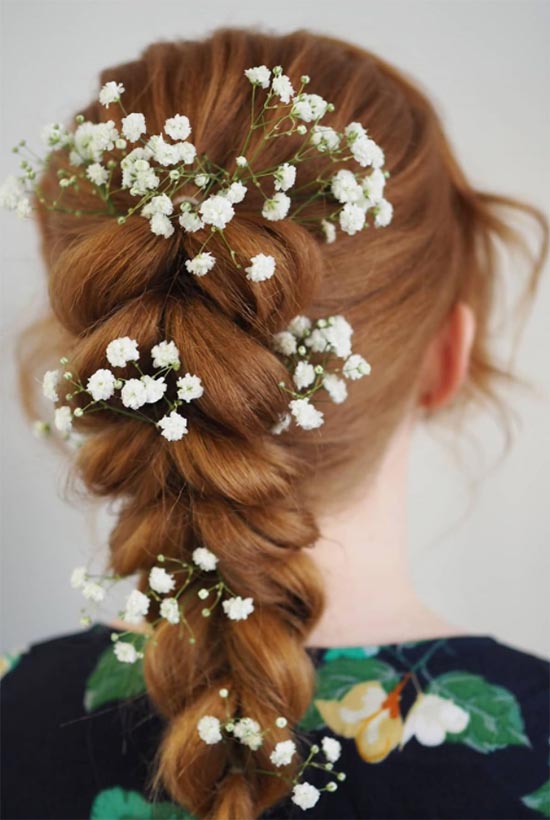
Who Is Henna Hair Dye Best for?
If you’re really dedicated, you can make henna work on nearly every hair type. However, it’s undeniable that henna works particularly well for the following situations:
Virgin Level 4-7 Hair
While henna can be applied to some dyed hair, the results will be unpredictable, and it definitely works best on virgin hair that’s between levels 4 and 7. This is a good hair color for dark blonde to medium brown hair. On these hair colors, it will come out a complex orange-red that also registers as quite natural.
On very light hair, the henna can come out almost too intense, and if you’re aiming for brown-leaning henna, it might also come out looking greenish because of the indigo. On the other hand, on very dark hair, the henna will give a reddish tint that can be very pretty, but it might not be the copper-red you’re hoping for.
Gray Hair
Henna also works really well on gray hair. Depending on how many grays you have and what your natural hair color is, you can also end up with a very pretty, complex look where your dyed grays look like highlights. For example, if your hair is dark with gray strands, the dark hair will take on a reddish tint, while the grays will turn a brighter copper, which can be really stunning.
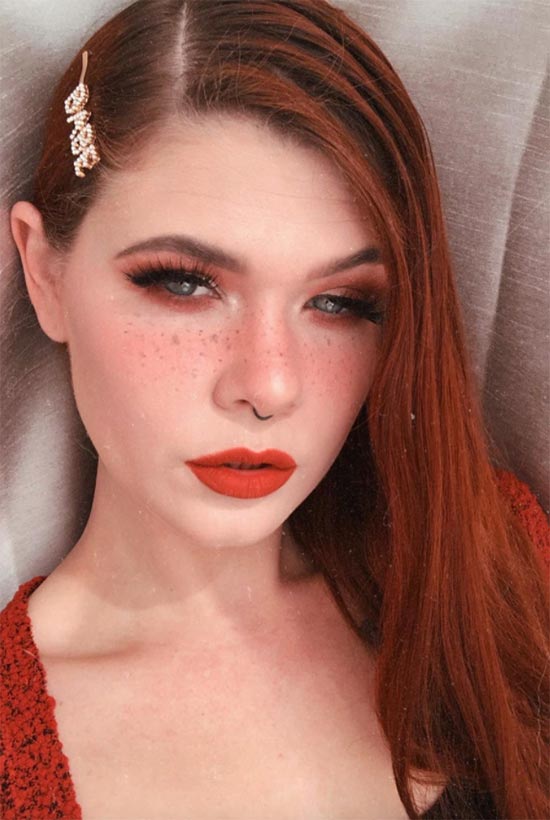
People without Commitment Issues
As we mentioned earlier, henna is very difficult to remove or fade from the hair. You should color your hair with henna on a whim, especially if you tend to change your mind often. However, if you’re committed to the red-leaning color that henna offers and are ready to keep re-dyeing it, it’s an excellent choice.
Faded Redheads
Lastly, henna hair color works particularly well for natural redheads that are seeing some fading. Some redheads notice that after they have children or as they age, their red hair loses some of its natural vibrancy. Sure, they can use a regular red hair dye, but the benefit of henna is that it brings back those vivid red tones while also strengthening the hair and giving it more gloss.
How Long Does Henna Hair Color Last?
Henna hair dye is considered a permanent hair color, so it’ll be pretty much stuck in your hair once applied. It can fade a bit over time, but in general, it’s actually more persistent and vibrant than traditional hair dyes. Of course, roots will grow out within 6-8 weeks, requiring regular touch-ups.
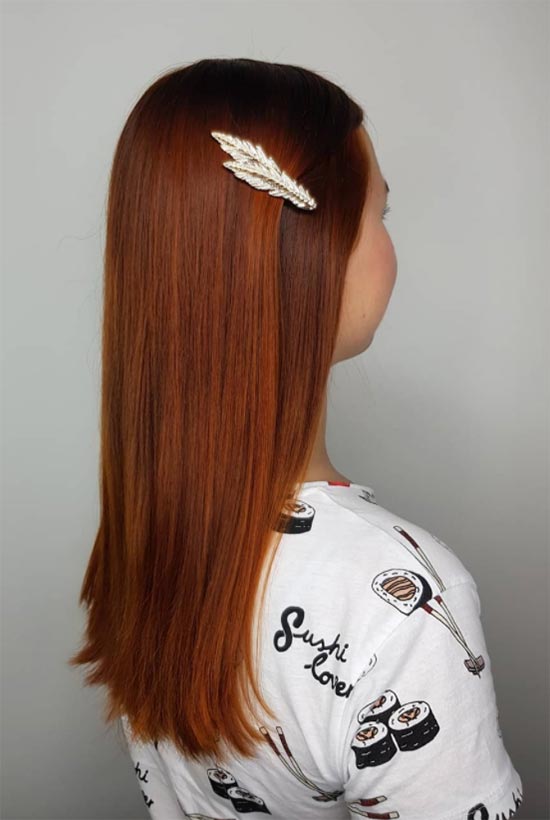
How to Apply Henna for Hair
Applying henna to the hair is not too different from applying regular hair dye, although the process is a little longer and a little less pleasant. We recommend that you do a patch test on your forearm a few days before starting this whole process just to ensure that you don’t have an allergy to the henna.
You Will Need:
- Henna powder or henna cream
- Solvent – you can use lukewarm water, or add lemon juice, apple cider vinegar, honey. Some brands recommend using strong brewed tea or coffee instead.
- Essential oil is optional if you’d like to mask the smell of the henna
- Non-metal mixing bowl or bottle
- Hair dye brush (optional)
- Reusable rubber gloves (disposable ones are likely to break during the dyeing process)
- Old clothes you don’t mind staining
- Petroleum jelly
- Non-metal hair clips
The Day Before
- Your henna mixture will probably have to process for 6-8 hours before it’ll affect your hair. We recommend pre-mixing it the night before.
- In a bowl or bottle, combine your henna with your solvent mixture. Keep adding solvent and mixing until it reaches a thin, paste-like consistency.
- If you’re using a bowl, cover it with cling film and put the mixture in a safe place to process.
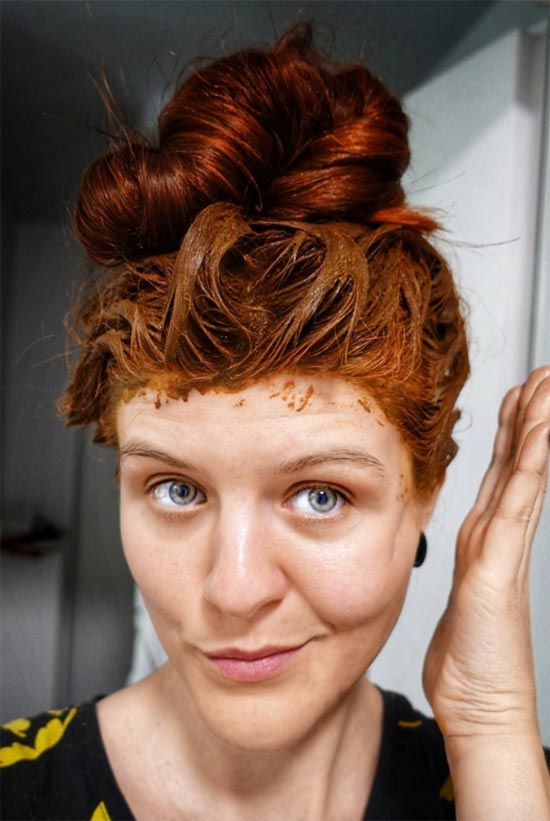
Dyeing with Henna
- Starting with dry hair, put on a shirt you don’t mind staining and a pair of gloves and gather all of your equipment.
- Check on the henna mixture you created the day before. It should now have a creamier texture than it did the day before. It will probably smell very green – some people compare the smell of henna to spinach.
- Cover the perimeter of your hairline and your ears with petroleum jelly because henna will stain your skin otherwise.
- If you’re planning to cover your entire head with dye, use a comb or the sharp end of a hair dye brush to separate the hair into 3-4 sections and then clip it up with non-metal hair clips.
- Unclip the section you’d like to start with and separate a thick chunk of hair from it. With your hands or a brush, begin applying the henna near the roots, and then pull it down to the ends of your hair.
- Separate out another thick chunk and repeat the process until that entire section of hair is covered in henna.
- Clip that section back up and move on to the next section. Keep following this process until your entire head is covered in henna.
- Examine your roots and potentially massage more henna paste into your scalp to get better root coverage.
- Finally, take out all of the clips and tie your hair up in one piece. Then, cover your hair with a shower cap or a plastic bag.
- Let the henna sit in your hair for 1-2 hours. The longer you let it stay in your hair, the more saturated with color your hair will become.
- Once enough time passes, you can take off the shower cap and rinse out the henna in the shower.
- To protect your hair, use cool water, and avoid shampoo. It might take a while for all of the henna to wash out from your hair.
- Once the henna has washed out, you may condition your hair if you like.
- Finally, get out of the shower and allow your hair to dry. Examine your hair and apply more henna if you need to make any corrections. Otherwise, enjoy your new look!
- 48 hours after you’ve dyed your hair, expect the henna to become a little darker. This is perfectly normal.
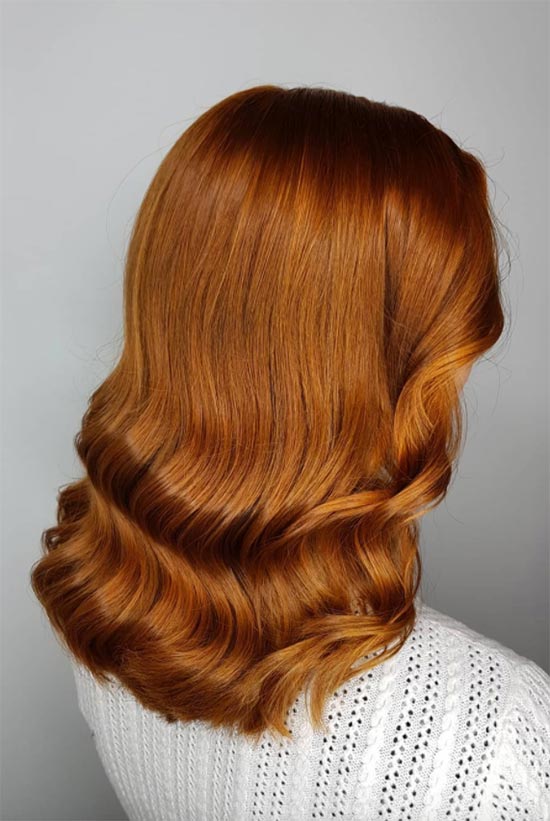
Henna Hair Dye Aftercare & Maintenance
Henna hair dye doesn’t require the same level of maintenance as other dyes, but we still have a few tips to keep your hair in great condition.
- To keep the color from fading, try to limit how often you wash your hair.
- When you do wash your hair, use lukewarm water and sulfate-free shampoo to keep the hair vibrant and healthy.
- Wear a hat when going out in the sun in order to prevent the UV rays from fading your henna color.
- Avoid swimming in chlorinated water since it’s hard to predict how the henna will react with the chemicals in the pool.
- You will need to touch up your hair as the roots grow out, which is usually every 6-8 weeks.
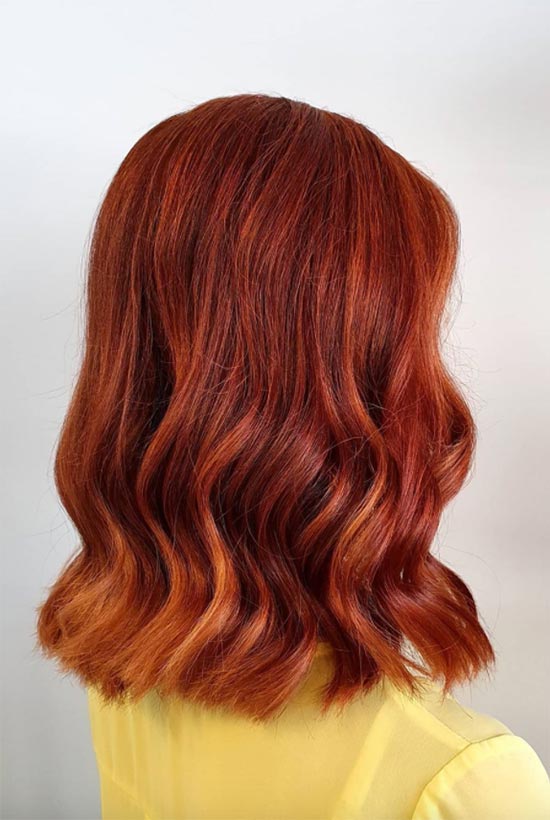
How to Remove Henna from Hair?
Henna hair dye is pretty much for life… unless you’re willing to take some risks. Here we have some tips for fading your henna hair dye a bit, along with more intense suggestions if you’d like to really get rid of all of the dye.
Be aware that this method is intense and may damage your hair. It’s also much harder to fade the more times you’ve applied henna to your hair.
Fading Henna Gently
The healthiest way to tone down and fade henna is with an oil or honey treatment. We recommend using oil because it’s easier to spread through the hair, and it’s also more affordable, but some sources absolutely swear by honey, so if you can tolerate the stickiness, give it a try.
Coconut oil is generally the best oil to try because it can penetrate into the hair really well, but you can also mix it with a runnier oil like olive oil in order to get a more spreadable texture. Adding a bit of lemon juice or apple cider vinegar is also helpful.
- Saturate your hair with the oil mixture, and then let it sit in your hair for as long as you can.
- Put a shower cap over your oiled hair to trap in heat and to prevent getting oil everywhere.
- You can heat things up even more with a blow-dryer. Leave the oil in your hair for at least 3-4 hours, although leaving it overnight is best.
- Then, wash your hair with a strong clarifying shampoo (this is the only time when we’ll recommend using a sulfate-based shampoo, folks). When you come out of the shower, your henna will be a bit faded.
- You can repeat this process a few more times over the course of a few weeks.

Vitamin C Fading
We normally recommend the vitamin C fading method for getting rid of traditional hair dyes, but it can also work with henna! It’s a little stronger than the oil method, but it’s still relatively gentle on the hair.
What you’ll want to do is make a mixture of one-part vitamin C powder or crushed vitamin C tablets with some sort of sulfate-based shampoo. Apply a generous amount of the mixture to damp hair and let it sit for around 1 hour. Wash it out with the help of a strong shampoo and then condition the hair to make up for the drying effects of the mix.
Bleach Bath
The most intense way of fading henna from the hair is with a bleach bath. This is also the most damaging, and it’s not appropriate for all types of henna hair dye. It’ll only work with pure henna, while over a henna cream dye, it can potentially alter the color of the hair in bizarre ways or even severely damage it.
If you’re interested in this method, we recommend first trying it out on a small piece of hair in order to assess what kind of color you’ll end up with as well as whether it’ll damage your hair at all.
- To give your hair a bleach bath, you will need a bleaching kit and a sulfate-based shampoo. Mix the powder and developer together, and then add an equal amount of the shampoo.
- Apply the mixture to damp hair, and then let it sit for 30-45 minutes.
- Rinse it out in cool or lukewarm water and follow it up with a deep conditioning treatment.
- Once you’re done, you can expect your hair to be lighter and ready to accept new hair dye, although it will probably still have the orange tint of the henna.
Photos via @viorosie, Instagram

